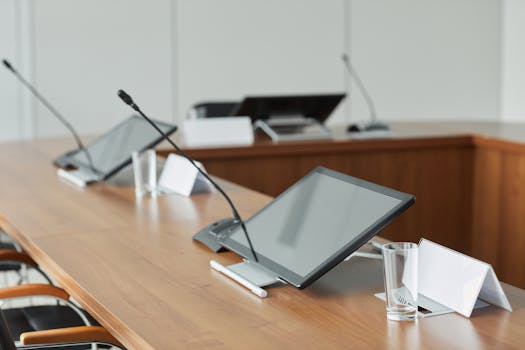Cardioid vs Omni vs Figure-8: Which Microphone Polar Pattern Should You Use?
9/23/2025 · Microphones · 6 min

TL;DR
- 'Cardioid' is the most versatile pattern for single-voice recording: it rejects room noise from the rear and gives good focus.
- 'Omni' picks up sound equally from all directions; excellent for multi-person roundtable mics and natural room ambience, but needs a quiet, treated room.
- 'Figure-8' captures front and back, rejecting the sides; ideal for two-person interviews and mid-side stereo techniques.
- Best practice: match pattern to your room and session type; prioritize placement and gain staging over swapping patterns mid-session.
Polar Patterns & Use Cases
- Cardioid: Heart-shaped pickup, strongest at the front and weakest at the back. Great for solo podcasting, streaming, voice-over, and close-miked instruments. Reduces bleed from monitors and room noise.
- Omnidirectional: Uniform pickup in all directions. Use it for group conversations, lavalier replacement on a boom, and when you want a natural, less colored sound. Not forgiving in noisy or reflective rooms.
- Figure-8: Bi-directional pickup, strong front and back, nulls at the sides. Best for facing interviews, duet vocals, and classic ribbon-style mic tones. Can be used creatively for stereo recording when paired with another mic.
Proximity Effect & Off-Axis Rejection
- Proximity effect causes bass boost when you get closer to directional mics. Cardioid and figure-8 show this; omni does not. Use proximity to add warmth to a voice, but watch for muddiness.
- Off-axis rejection helps reduce unwanted sound from certain directions. Cardioid gives a useful rear null; figure-8 gives side nulls for isolating sources in narrow setups.
Placement & Distance Guidelines (approx.)
- Close-miked vocal (cardioid): 2–6 inches from the capsule to get presence and minimize room.
- Omni for roundtables: 12–24 inches above the table or a central placement to capture all participants.
- Figure-8 interview setup: Place mic between two speakers, each at 4–12 inches, aiming fronts at each person.
Room Acoustics & Noise Considerations
- Room treatment matters more for omni than cardioid. Reflections and reverb are captured equally by omni, so dampening or a quiet location is important.
- Cardioid helps mask noisy corners and rear distractions but still hears room tails. Combine cardioid use with absorption behind the mic and reflective suppression off-axis.
- Figure-8 will record room ambience from the front and back; put absorbers to control unwanted reflections if you need a dry sound.
Recording Scenarios & Recommendations
- Solo podcasting/streaming: Cardioid or a tight cardioid variant is the default choice for tonal focus and noise rejection.
- Two-person interview in one room: Figure-8 or two cardioids facing each speaker; figure-8 simplifies setup when you want a single-capsule solution.
- Roundtable or choir: Omnidirectional or spaced omnis deliver a natural, blended capture. Consider multiple mics for clarity.
- Acoustic instruments: Cardioid for direct capture, omni for room ambience or natural decay, figure-8 for capturing both instrument and room or dual-source setups.
Practical Tips for Better Results
- Dial in gain so meters peak well below clipping; room noise becomes obvious with excessive preamp gain.
- Use pop filters and wind screens to control plosives when close-miking.
- Test patterns during setup; listen back to confirm off-axis noises and proximity effect are acceptable.
- If you have a noisy environment, prefer cardioid and tighten placement before changing patterns.
Which Pattern Should You Choose?
- Choose cardioid if you need isolation, consistency, and less room influence.
- Choose omni when you want natural room sound or need to capture multiple talkers around one microphone in a quiet space.
- Choose figure-8 for face-to-face interviews, stereo M-S techniques, and situations where side rejection is useful.
Buying Checklist
- 'Pattern options': Does the mic offer switchable polar patterns for versatility?
- 'Connection': XLR for studio-grade preamps, USB for plug-and-play convenience.
- 'Pad and high-pass': Useful to tame loud sources and proximity bass.
- 'Stand and mount': Shock mount and adjustable stand improve isolation and positioning.
- 'Room treatment budget': If choosing omni, allocate more to room treatment.
Bottom Line
Match polar pattern to your recording context: cardioid for focused solo work and noisy rooms, omni for natural group capture in quiet or treated spaces, and figure-8 for interviews and creative stereo techniques. Proper placement and room control usually yield bigger improvements than swapping to a different mic pattern.
Found this helpful? Check our curated picks on the home page.